If your child or loved one uses an augmentative or alternative communication (AAC) device, you probably want to support them in the best way possible. However, it can be difficult to know what to do. There is no clear handbook on where to begin and there are a ton of AAC systems/softwares out there. We know that it can be overwhelming, which is why we’re here to help!
Continue reading to learn about 5 ways to help support your child’s AAC use.
What is AAC?
Augmentative and alternative communication (AAC) is an umbrella term for different communication methods. AAC is often used by individuals with complex communication needs, i.e., individuals who may not be able to communicate most effectively through speaking.
There are many different types of AAC, from no tech, to low tech, mid tech, and high tech. AAC is highly customizable and can be modified to align with the user’s needs and preferences.
AAC can also be overwhelming for those who are not familiar with it. We get it - we were once there, too! Through our educational and career experiences, we have learned a lot about AAC and are eager to share our tips with everyone.
5 Tips for AAC Use
1. Become Familiar with the AAC System
Take some time to get to know how the AAC system works! Scan through the vocabulary, learn some of the operational functions (e.g., power and volume), and familiarize yourself with the overall layout and organization. If your child is using a low tech system, such as a communication board or book, you can get familiar with what vocabulary is included and where it is on the board or in the book.
If your child has a mid tech AAC system, such as a BIGmack button, you can learn how to turn it on and off, how to adjust the volume, how to change the message on it, and how to position it in a place where it can easily be accessed by your child.
This video teaches you how to customize a BIGmack button!
If your child has a high tech AAC system, such as a speech-generating device, you can learn about all of the vocabulary on the device, where to find certain words on the app, how to charge and care for the device, and how to troubleshoot any difficulties.
Beyond learning the language on the AAC systems, there are also other things to learn about AAC!
We often refer to learning how to use AAC systems as operational competencies. We believe it is important for both you and your child to develop operational competencies. This may include how to adjust the volume, how to turn the device on and off, and how to manipulate it effectively.
There are often accessories that come along with AAC devices; it can be helpful to become familiar with those as well!
Access methods may be adjusted to best fit the needs and abilities of your child; this may be something to discuss with your team, which leads us to the next tip…
2. Work with the AAC Team
Your child’s care team likely includes a speech-language pathologist, a pediatrician, YOU, and other professionals. Remember that you are a valuable member of the team and collaboration is important! Collaboration can help with the carryover of AAC use, which means it is used in speech therapy sessions, at school, at home, in the community, and more!
You know your child best and can advocate for their needs, abilities, and preferences better than anyone else. You may provide input on key vocabulary to add to their AAC system, what access methods are working well, and what challenges you have faced.
3. Model Language Using AAC
Most children learn language through their exposure to it. Children who use AAC benefit from exposure to AAC systems (and their robust vocabulary within them)! This can help them learn how to use these systems to communicate successfully.
Spending a dedicated amount of time each day actually using the AAC system with your child to demonstrate how to use it is excellent (another reason why tip #1 is so important)!
We know that a “dedicated” amount of time may be 5 minutes some days, 30 minutes another day, and 90 minutes on a really great day. Rather than feeling pressured to model AAC for an X amount of time each day, try to use it as much as you are able.
There are many ways to model language through Aided Language Stimulation.
Modeling Language Examples
Before a meal:
- Pointing to a symbol of food
- Pressing the button “eat”
- Saying “eat” while pointing to the symbol/pressing the button
Moving around the house or going to a new location:
- Point to “go”
- Press the button “go”
- Say “go” while pointing to the symbol/pressing the button
4. Keep the AAC System Around
Your child will learn how to use their AAC system faster if they have more opportunities to use it and are able to use it immediately! As humans, we do tend to take the path of least resistance, so consider this by keeping the AAC system near them as much as possible. This can increase the probability that they will be more inclined to use it. If they’re playing on the ground, have it next to them on the ground. If they’re brushing their teeth, have it on the bathroom counter. If they’re riding in the car, have it on their lap or next to them.
5. Encourage, but do not Force, AAC System Use
It’s important that your child is encouraged to use their AAC system(s)! Any attempts they make to use it, even if they don’t point to or press the “correct” button, is great. Language use for anyone requires a lot of learning and trial and error.
Respond to their communication attempts, provide praise, and acknowledge what they say. We do discourage forced use of AAC, though. An example of forced use may be grabbing your child’s hand to press a message/phrase on their device of something you may want them to say - even if they haven’t demonstrated any interest in pressing that button.
Some days your child may not want to use AAC as much as other days, and that’s okay! Each day may look different.
Having a sense of AAC ownership can also be key! By encouraging, but not forcing, AAC use, AAC ownership may be developed more quickly.
Bonus Tip for AAC:
Presume competence! This means that you assume that your child is able to communicate and will learn how to use their AAC systems to communicate effectively. It may take time, and you may explore different vocabulary sets, but believing they can do it can make a big difference in your (and their) mindset!
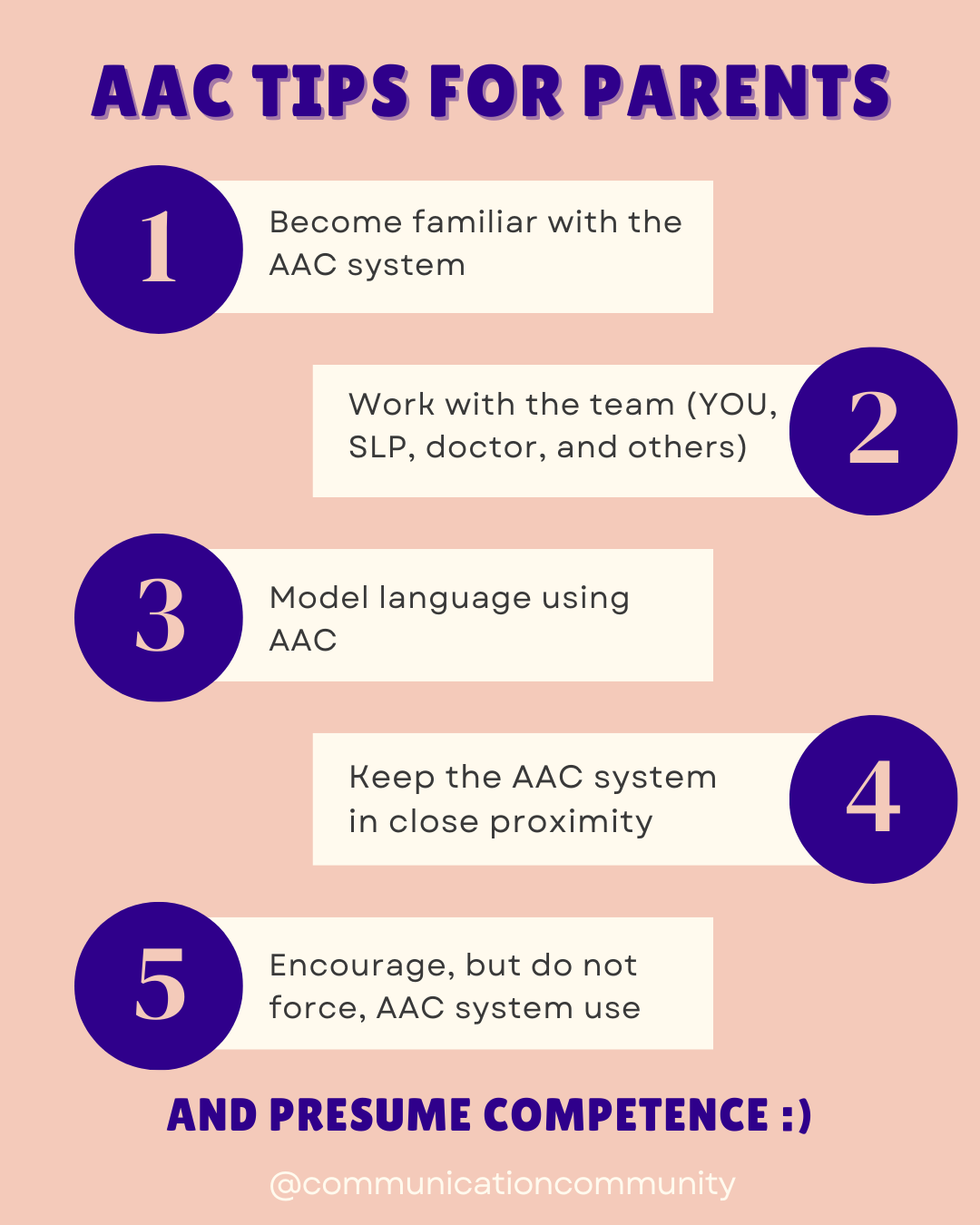
Looking for More AAC Information?
- Getting Started with AAC
- Core Words vs. Fringe Words
- What is Multimodal Communication?
- How to Optimize AAC Systems
- Why you Should Back up AAC Devices
AAC Products and Resources
- AAC Master Goal Bank (our best-selling product!)
- Core Word of the Week: Go
- Core Word of the Week: More
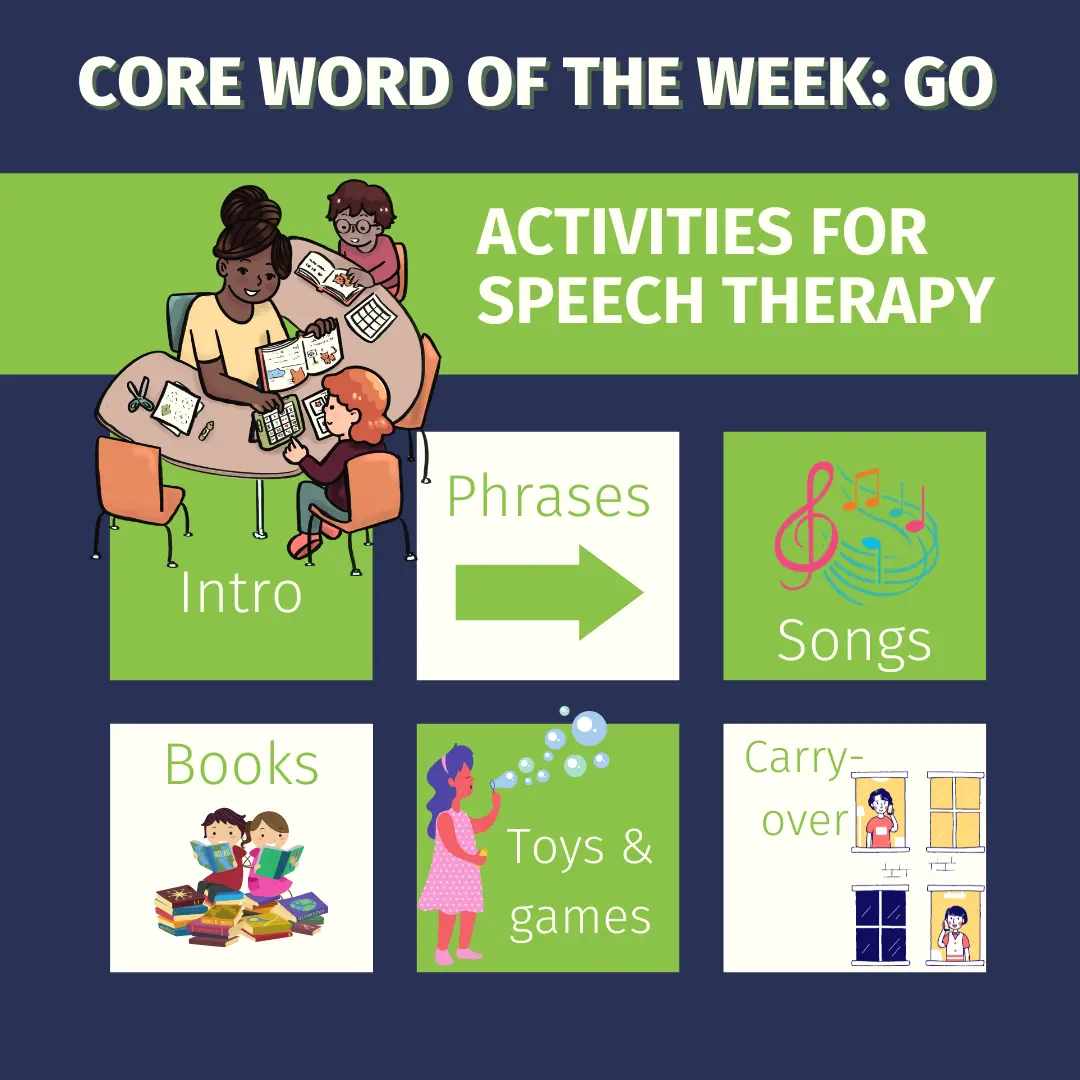

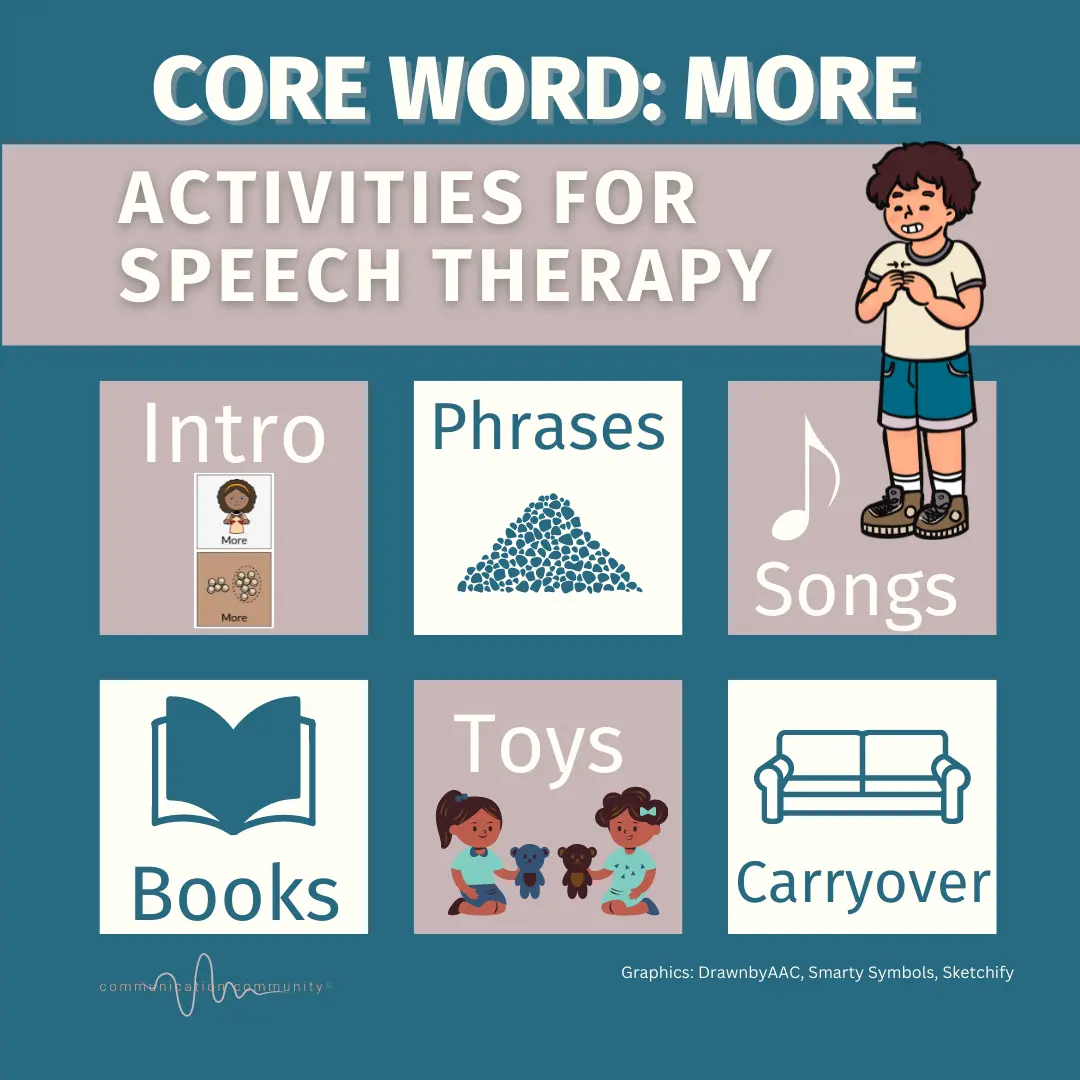

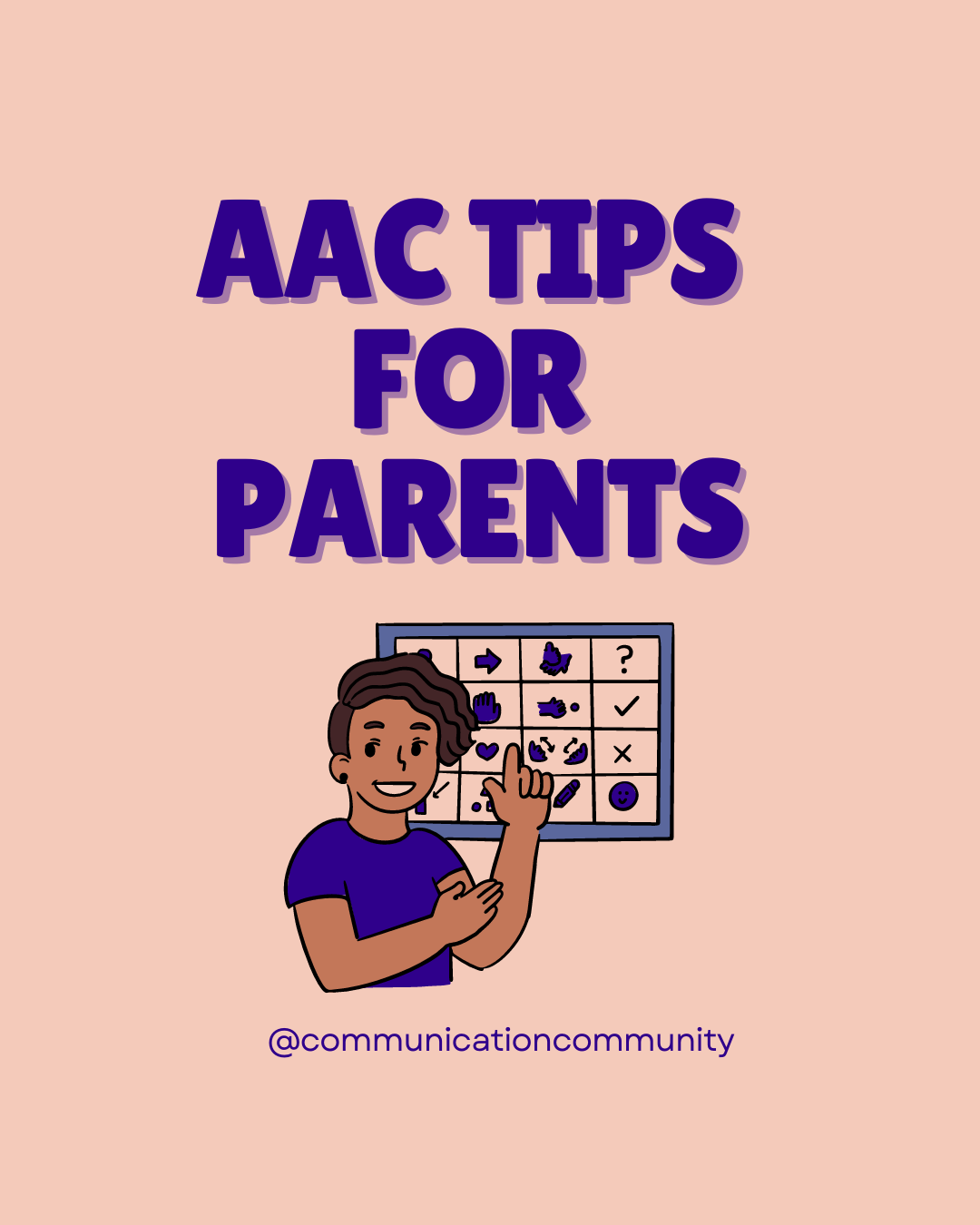
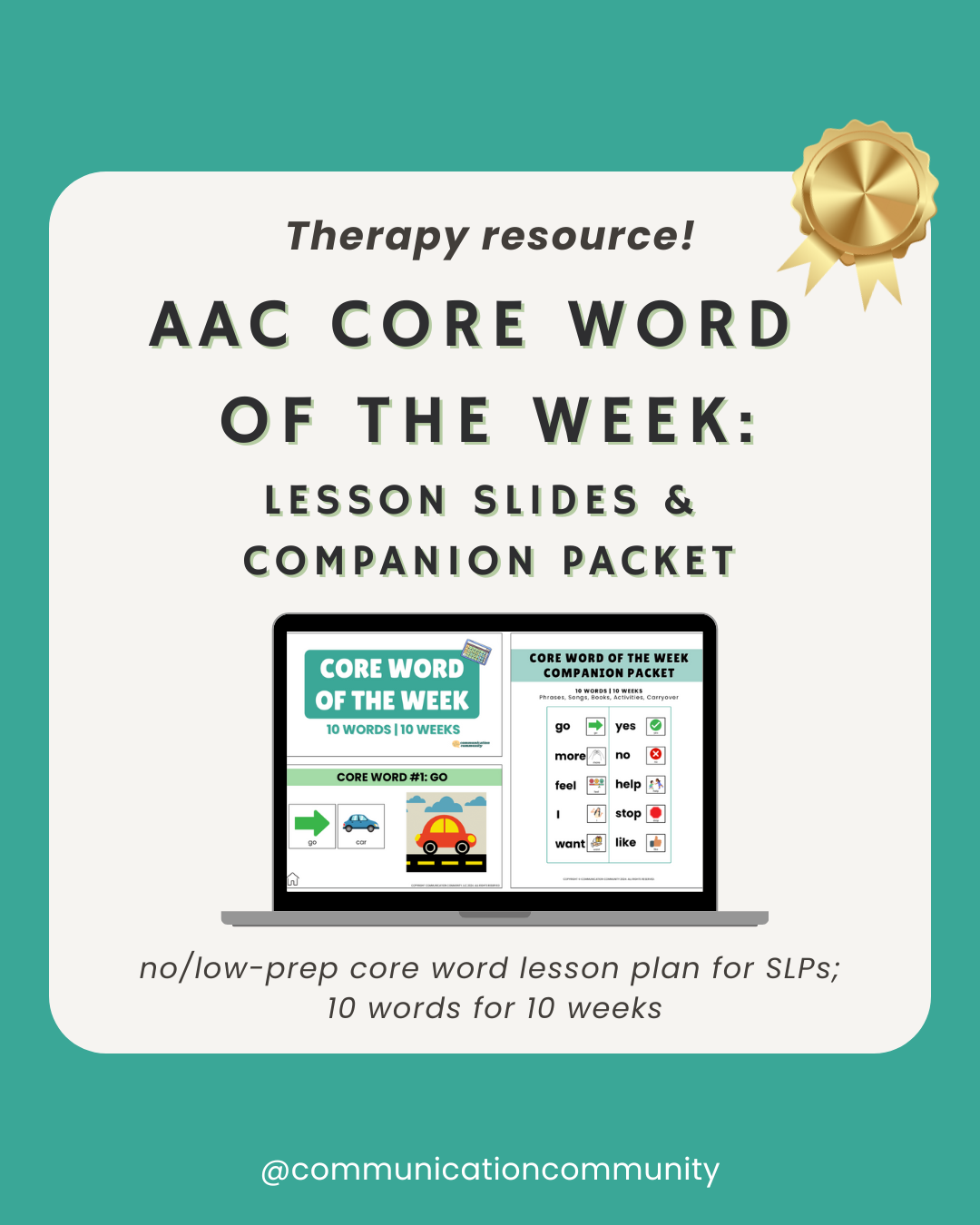
![How to Write AAC Goals [with goal bank]](https://www.communicationcommunity.com/content/images/2024/03/How-to-Write-AAC-Goals---ghost-cover.png)
![How to Write Neurodiversity-Affirming Speech Therapy Goals [with goal bank]](https://www.communicationcommunity.com/content/images/2023/12/How-to-Write-ND-Goals---ghost-cover.png)
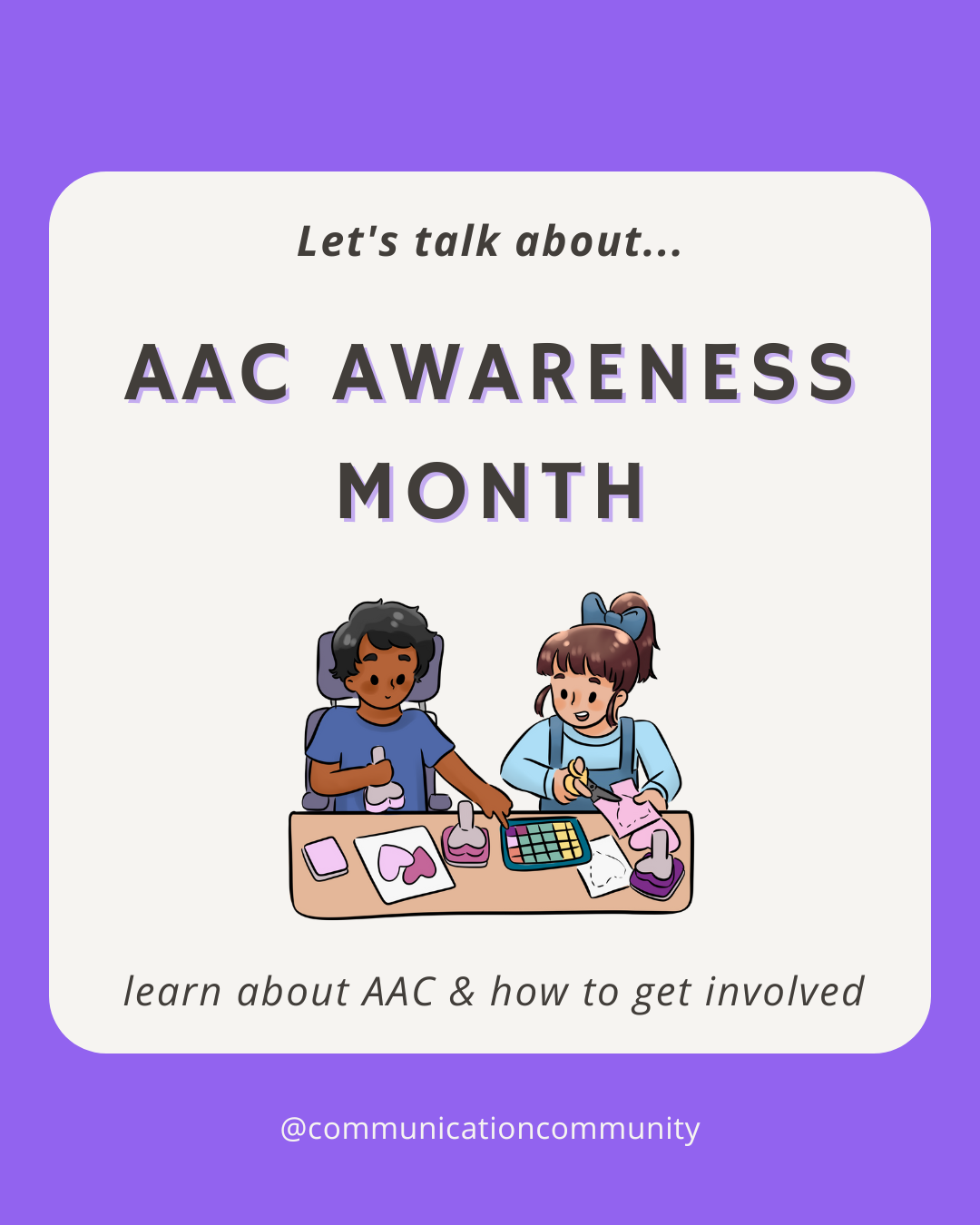
![What is Modeling Without Expectation? [AAC resource]](https://www.communicationcommunity.com/content/images/2023/03/1.png)
